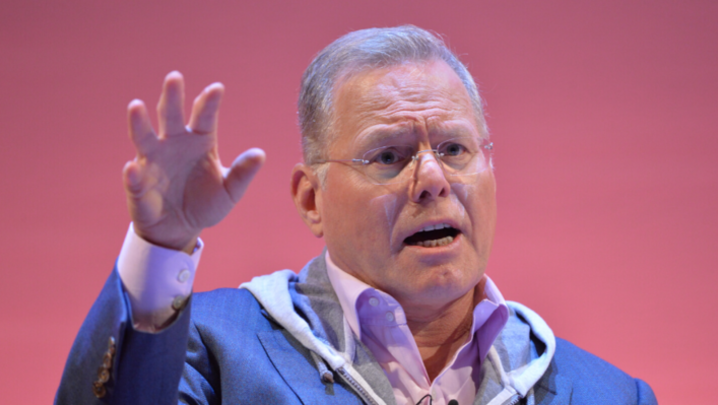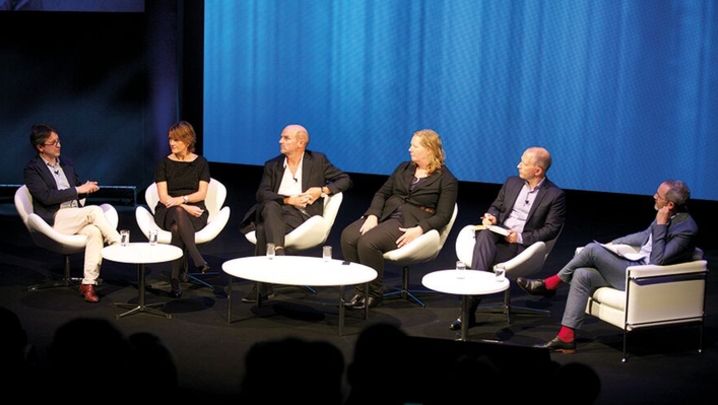The RTS hears how sport’s mixed TV economy is helping to drive record audiences to sports such as women’s football.
It’s more of a trickle than a flood, but live sport is returning to free-to-air television. Women’s football, cricket’s new The Hundred competition and, most recently, Super League rugby have all signed deals that give terrestrial TV the right to show some live matches.
Super League rugby games will air on free-to-air TV for the first time in the competition’s history in 2022 after a two-year deal was agreed with Channel 4. Sky Sports will show the overwhelming majority of fixtures, while Channel 4 will show 10 games.
Rugby League has been hit hard by Covid-19 and it is looking for new supporters to shore up its finances. Emerging sports – and none is growing quicker than women’s football – want to increase their fan base, while some established sports, such as cricket, desperately need younger followers, both to play and watch the game.
The answer for all three sports appears to be a mixed TV economy, balancing the money from pay-TV’s deeper pockets with the greater exposure offered by terrestrial TV. The latter, argued a top-notch panel of sport experts at a recent RTS event, can boost audiences and grassroots participation.
Women’s football is “a success story but it’s only just beginning”, argued Dawn Airey, Chair of the Barclays FA Women’s Super League and former Channel 5 CEO. “We want young women to see that you can play football at a very high level and make a really good career out of it.
“The turning point was the 2019 World Cup, when England played the US and 12.5 million people tuned in and people suddenly realised that these are really terrific athletes playing a fantastic game of football.
“Women’s football is on the cusp of being a very, very, very significant industry, and that’s got to be good because it’s also going to result in… getting younger women more active.”
Free-to-air access, she said, was “absolutely critical”, adding that women’s football had to balance “revenue and reach. We need to drive money into the game but we absolutely want engagement, and to get engagement you need that free-to-air opportunity.”
Women’s Super League matches are shown live on Sky Sports, the BBC and the FA Player in a three-year deal, which began this season.
“Women’s football is the single biggest growth sport in the country bar none, male or female. The growth is extraordinary,” said Philip Bernie, head of TV for BBC Sport. “This year alone on the BBC, [women’s football] has reached nearly 8 million – and about 90% of those viewers have not watched [it] before.
“A couple of years ago, there was an element from broadcasters of, ‘Oh, it’s something we should be doing – it’s a good look’,” said Eddie Hearn, Chair of Matchroom Sport. “But, over the years, it has developed into a very valuable set of TV rights, and also the quality has improved significantly.”
Matchroom has many women’s world champions on its books, including Ireland’s Katie Taylor, the former footballer turned boxer, who landed gold at the London Olympics. “There are so many great female fighters and it’s a big part of what we do now, but it’s sitting there on its own merit,” said Hearn. “Female fights are driving audiences and subscriptions, putting bums on seats… that’s what really gives longevity across women’s sport.”
Women’s football is not the only sport to benefit from free-to-air exposure. Bernie highlighted netball, which has attracted almost 300,000 more women to the game in recent years (encouraged by TV coverage, according to England Netball), and The Hundred.
The new cricket format for men and women’s teams, which aired on Sky Sports and the BBC over the summer, pulled in 16.1 million viewers, more than half of whom had not watched any live English Cricket Board matches in 2021.
Matchroom Sport works with sports streaming giant DAZN to put on fights across the world, avoiding the need to strike deals with broadcasters territory by territory. “The global vision of DAZN and, of course, the rights fees that it was willing to pay… was, for us, as a business, too compelling,” said Hearn. “Our plan for the boxing business is a true global look.”
Boxing was once a mainstay of terrestrial television; an audience of 17.5 million on ITV watched Chris Eubank and Nigel Benn fight out a draw in 1993. But Hearn said he had a duty to seek out the highest purses for his stable of boxers: “That’s not possible [from] rights generated through a PSB or from a terrestrial broadcaster. If it was and we could generate an audience of 17.5 million for Anthony Joshua against Tyson Fury, and they wanted to pay the equivalent rights fee generated across pay-to-view, it would be an easy decision for a rights holder.
“It’s a given that the exposure given to a sport is less when it’s behind a paywall… [but] I don’t think it has affected the sport in terms of its participation levels. Stars are what drives participation levels at grassroots, people such as Anthony Joshua.”
Andrew Georgiou, President of sports at Discovery, argued that sport gains from a mixed TV economy. Across Europe, Discovery worked with free-to-air broadcasters and boosted audiences for the Tokyo Olympics: “375 million unique Europeans engaged with the Olympics, 200 million of those were on PSBs… Discovery’s own platforms added 175 million extra viewers.”
Attracting younger audiences to live sport, though, is trickier. Airey said: “We look at Gen Z and we know that they want short clips and are very unlikely to sit and necessarily watch a whole match.”
Bernie recognised that sport needed to “maximise [its] value on digital and social… that’s where younger people are spending their time in terms of media”. But the biggest sporting events attract massive audiences – 31 million (25 million on BBC One; 6 million on ITV) watched Italy defeat England in the Euros final in July 2021. “Huge numbers of young people watched those.… Sporting events of that size still attract young audiences to linear-TV.”
Looking at the current state of the sports rights market, Bernie agreed with Georgiou: “It’s obviously very competitive, but it has been for a long time, and a mixed economy works pretty well.”
Georgiou noted that sport was one of the few genres to remain an “appointment to view”. It was valuable because it guaranteed “a tune-in audience at a particular time on a particular day”.
Rights holders wanted to maximise value, he said, but needed to strike a balance: “If you’re an emerging sport, trying to maximise value by putting yourself behind a very narrow paywall… you can suffocate your sport before you’ve even begun.
“The idea that, just by having your content on an OTT platform such as Discovery+ is sufficient to attract the maximum audience,… is old-school thinking.… We [use] free-to-air broadcast to help promote audiences and awareness around what we have in digital because we know digital platforms… are narrower.”
The best example of that “ever”, suggested Airey, was Match of the Day, which promotes live Premier League matches shown on both Sky and BT Sport.
Report by Matthew Bell. ‘Paywalls and PSBs: A new dawn for sport on TV?’ was an RTS event held on 29 November. It was chaired by sports presenter Mina Rzouki and produced by David Amodio.





